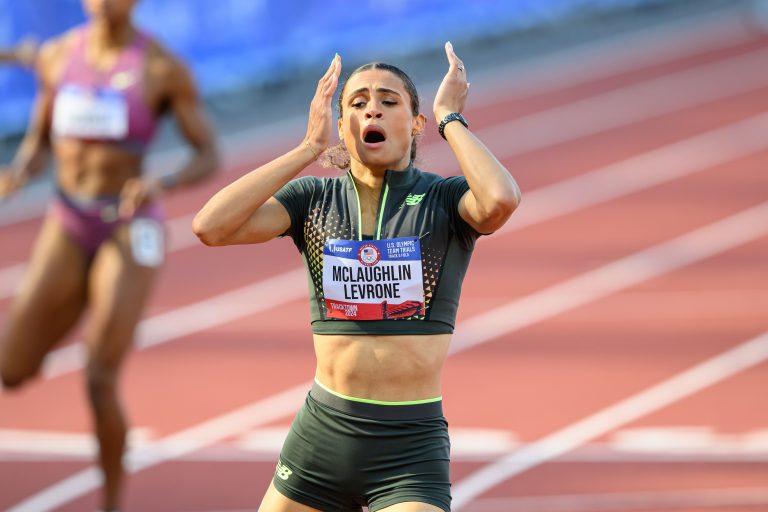Hayward Field in Eugene, Oregon, once again witnessed greatness as Olympic champion and world record holder Sydney McLaughlin-Levrone stamped her authority on the track, winning the women’s 400m at the U.S. trials and earning her ticket to the upcoming World Championships.
The 25-year-old, already cemented in history as one of the most dominant 400m hurdlers of all time, stopped the clock at an astonishing 48.90 seconds. Her performance didn’t just secure victory—it reaffirmed her position as one of the most versatile and gifted athletes in modern track and field.
McLaughlin-Levrone’s decision to compete in the flat 400m this season has been one of the most talked-about moves in athletics. For years, she has been virtually untouchable in the 400m hurdles, shattering records and redefining what’s possible in the event. She holds multiple world records, including her jaw-dropping 50.68-second run at the 2022 World Championships—an achievement many called the greatest single-lap hurdles race in history.
But for McLaughlin-Levrone, dominance in one event was not enough. Seeking a fresh challenge and a new way to push her limits, she opted to switch focus for 2025, taking on the pure speed and endurance test of the 400m flat. While some questioned whether she could match the specialists in this event, her season’s progression has silenced any doubts.
Her victory at the U.S. trials was not just about winning—it was about how she won. From the gun, McLaughlin-Levrone executed a near-perfect race, attacking the opening 200 meters with controlled aggression before powering through the final bend. In the home straight, she displayed the same composure and strength that has made her a hurdles legend, surging ahead of a competitive field to claim victory.
Crossing the line in 48.90 seconds, she recorded one of the fastest times in the world this year, positioning herself as a serious contender for gold at the World Championships. Her time also puts her within striking distance of the American record, set by Sanya Richards-Ross in 2006 at 48.70 seconds.
Speaking after the race, McLaughlin-Levrone expressed both gratitude and excitement for what lies ahead. “It’s been a different kind of season for me, but I’m loving the challenge,” she said. “The 400m is such a tough race—physically and mentally—but I’m learning so much, and I’m excited to represent the U.S. at Worlds.”
With her unmatched combination of speed, endurance, and championship composure, McLaughlin-Levrone now turns her attention to the global stage. The upcoming World Championships will not only be an opportunity for her to test herself against the world’s best in a new event—it could also mark the start of a new chapter in her career.
Whether she’s hurdling or running the flat lap, Sydney McLaughlin-Levrone continues to raise the bar for what’s possible in women’s athletics. Fans can expect nothing less than another electrifying performance when she steps onto the track in pursuit of World Championship glory

